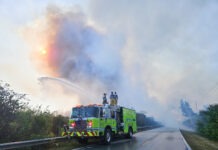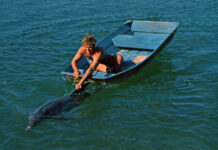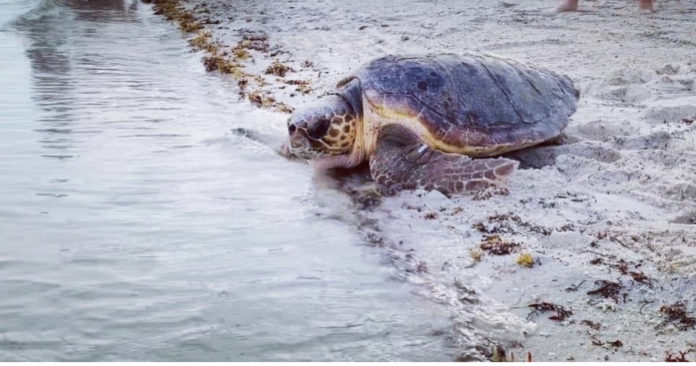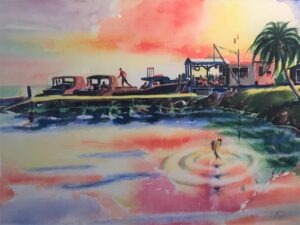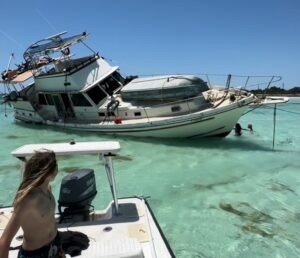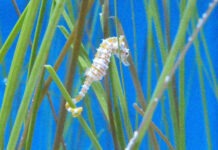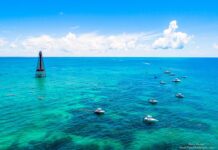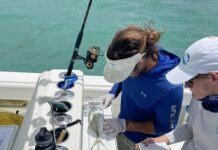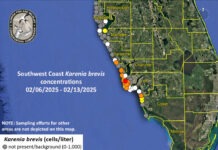“This is horrific.”
Bette Zirkelbach, the manager of the Turtle Hospital in Marathon, could not hide her frustration, disappointment and sadness. An endangered adult loggerhead sea turtle had come out of the ocean to nest on Sea Oats Beach. Unfortunately, the female turtle was hit and killed while crossing U.S. 1 in Islamorada.
“This area continues to be a hazard for sea turtles during nesting season,” Zirkelbach said.
“A short fence was put in in an attempt to keep sea turtles safe, but the sargassum weed is so thick, it piles up, and the sea turtles easily cross the fence barrier onto U.S. 1.”
In the Florida Keys, sea turtle nesting season runs from mid-April to mid-October. This means there are active sea turtle nests throughout the Keys during that period. Each year, the Keys get an average of 100 loggerhead sea turtle nests and a handful of hawksbill sea turtle nests. There’s even been one documented leatherback sea turtle nest in the past 20 years.
This year alone, there are already 16 counted nests at Sea Oats Beach.
All species of sea turtles in and around the Florida Keys are listed as endangered, critically endangered or threatened. They are protected by federal and state laws, Zirkelbach said. It is a federal offense to disturb or touch any sea turtle.

Multiple times a season, adult female sea turtles will come onto the beaches to dig nests and lay their eggs. These turtle moms are sensitive to artificial light, Zirkelbach said. Historically, the moon reflecting on the water’s surface was the brightest thing in the night sky, and nesting females used that light contrast to find their way back to the ocean after nesting. Baby sea turtles, called hatchlings, also rely on natural light in the night sky to find their way into the ocean. Unfortunately, artificial lighting, including automobile headlights on U.S. 1 and external home lights or street lights can distract and disorient mom and baby sea turtles with “devastating results,” the turtle expert said. If sea turtles attempt to cross roads because they are disoriented, they come in danger of being hit or run over. This is a problem throughout the Keys.
“We have rescued nesting females from the middle of the road in Key Colony Beach, Key West and off Tingler Avenue near Sombrero Beach over the years,” Zirkelbach said.
The loggerhead that was struck and killed was a 250-pound reproductive female, meaning she had reached sexual maturity and was able to help the species reproduce. She would have nested five to eight times this season, laying a clutch of roughly 100 to 120 eggs each time, Zirkelbach said. Only 1 in 5,000 sea turtles survives to sexual maturity, so this was a great loss for our local Keys population, she added.
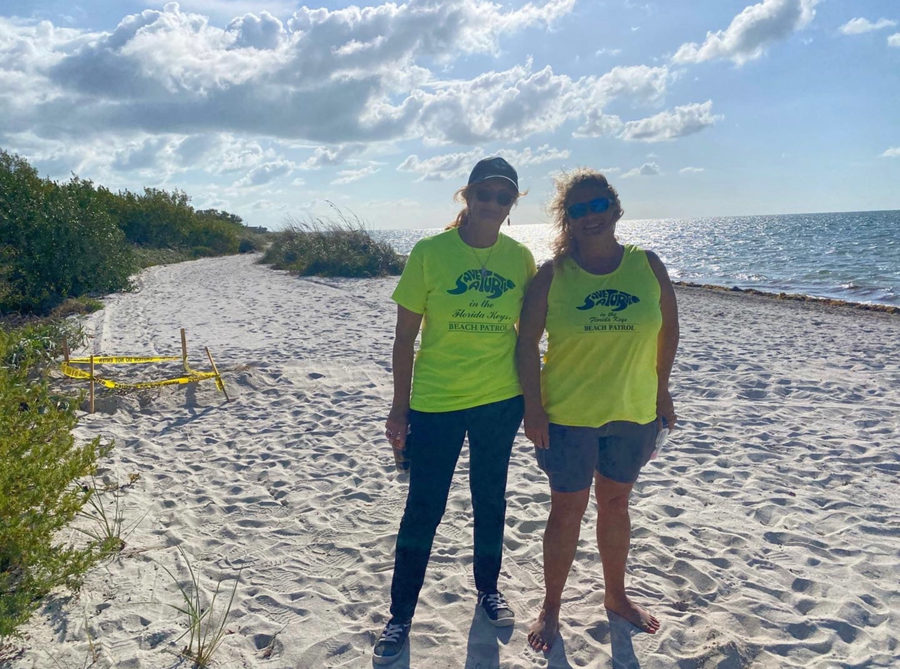
“Every sea turtle matters,” she said.
As for what changes are needed, Zirkelbach and other sea turtle advocates are calling for appropriate safeguards for nesting females and hatchlings. First up, something that protects sea turtles from the artificial light of automobiles driving on Overseas Highway is needed. Also, a barrier high enough to prevent adult female and hatchling loggerhead sea turtles from entering the road is recommended. Chain link fences, which are being discussed, won’t work because hatchlings could still get through. Making this opaque enough to block out the light is key.
When state Rep. Jim Mooney saw what happened to that mom turtle, he reached out to FDOT and the Village of Islamorada to underscore the results of the low fencing. While both have responded and are working on the issue, the representative has yet to see any improvements. He is keeping tabs on the issue and inquiring again.
“It is very important for the environment to have a public/private relationship established,” he said. “Government too many times gets bogged down due to the requirements of moving projects forward. This is why the private sector is so important to keep things moving at a faster pace. … I would like to think that this will be resolved before another turtle’s death occurs… .”











